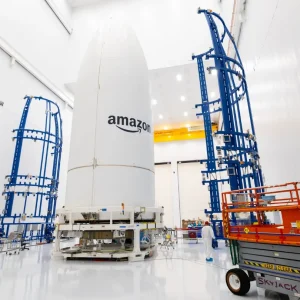From shopping online, to scrutinising our bank balances, digital technology has become ingrained in everyday life, making applications the lifeblood of today’s organisations. Consumers expect these digital services to work seamlessly, which has driven businesses to adopt more intelligent approaches to developing and maintaining them, such as DevOps. These modern approaches enable IT teams to work more closely in order to deliver flawless digital services and updates in much shorter timeframes than have previously been possible.
However, although most of us use these digital services on a daily basis, very few realise that as we live, work and play online, the app economy is in large part underpinned by the mainframe. Despite having been around for over 50 years, even today the mainframe is responsible for crunching the numbers and processing over 30 billion transactions that power the digital economy every single day. Mobile banking, for example, relies heavily on a string of complex digital services that draw data from the mainframe, despite the core service visible to the consumer being delivered through a flashy new modern app. It’s therefore unsurprising that 88% of CIOs say the mainframe will remain a core business asset over the next decade.
The mainframe of the digital economy
Despite its central role in supporting digital services, very few modern developers have experience working on the mainframe, and even fewer understand the complex interdependencies that exist between these legacy systems and distributed applications. This is in part due to the isolated environment that specialist mainframe developers have historically worked in; the very same secluded working environments that DevOps encourages companies to move away from. As mainframe developers worked in silos, independent of others, the newer generations of developers were alienated from the platform and had little opportunity to learn from their more experienced colleagues. This has created a shortage of skilled mainframe developers as the older generations continue to reach retirement age.
In an increasingly interconnected IT environment, this skills shortage is hindering DevOps initiatives. If developers aren’t aware of the detrimental impact that a single update to one application can have on the wider ecosystem, they’ll find it nearly impossible to deliver error-free digital services and updates as quickly as they’re required to. So how can businesses keep up with rising consumer expectations and enable programmers with little to no mainframe experience to deliver flawless updates to applications on any platform?
Enter the polyglot programmers
First and foremost, companies need to work towards enabling their developers to work interchangeably on any IT project, regardless of the platform or programming language behind it. As most developers have little experience working on the mainframe, companies need to provide them with modern tools and development interfaces that are more familiar to them and can be used across any IT platform. Importantly, mainframe tools must be integrated with popular and familiar open source/distributed DevOps solutions so that developers can use the same tools for COBOL, Java and other languages.
Having one modern interface and a common set of tools across all platforms will help to unify agile software development lifecycle workflows by enabling programmers to switch seamlessly between tasks regardless of the platform and bringing the mainframe into the fold of mainstream IT. With this approach, the mainframe becomes only different in syntax where languages like COBOL are just another programming language for developers to learn.
However, enabling developers to update mainframe applications is only half the battle. They must also find a way for developers to more intuitively understand the complex interdependencies that exist between the applications and data sets that are integral to the services they’re delivering, without the need for digging through incomplete documentation or acquiring the same specialist knowledge that took their veteran colleagues years to acquire. Rather than expecting developers to manually trace the complex web of interdependencies between applications and data, modern visualisation technologies can do the legwork for them. Having the ability to instantly visualise the relationships between digital services, as well as the impact any changes they make have on the wider ecosystem, will enable developers to update mainframe applications with confidence that there won’t be any unforeseen consequences.
Mainstreaming the mainframe
Ultimately, education is needed to convince non-mainframe programmers that there is a bright future for these hugely reliable and powerful mainframe systems. To encourage this, businesses need to integrate the mainframe into mainstream cross-platform DevOps processes. The easiest way to achieve this is if the same interfaces and tools can be used across all platforms. This will also encourage collaboration, eliminating mainframe silos and promoting cross-platform DevOps, which should make programming on the mainframe easier and more intuitive to developers who usually work on distributed applications.






